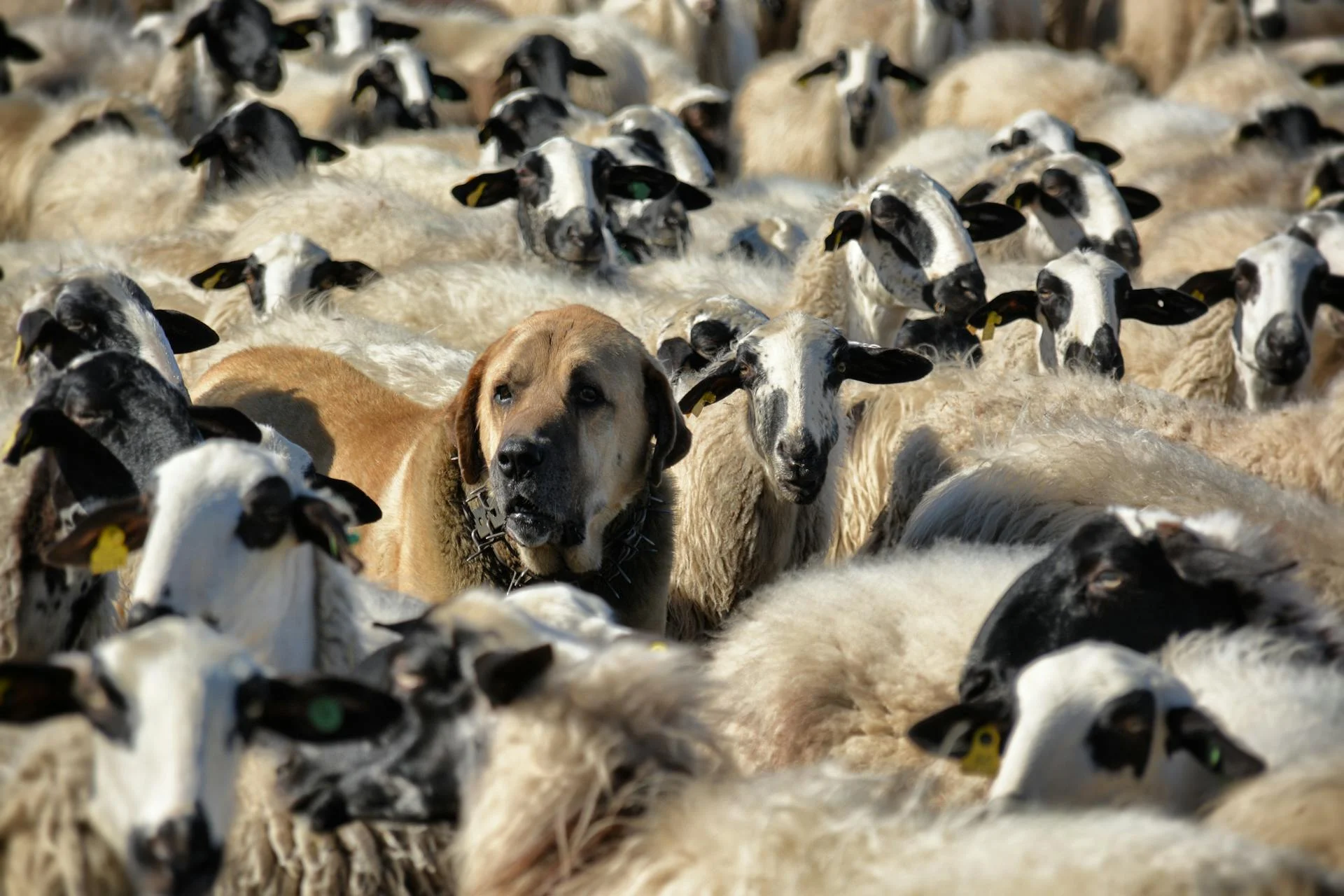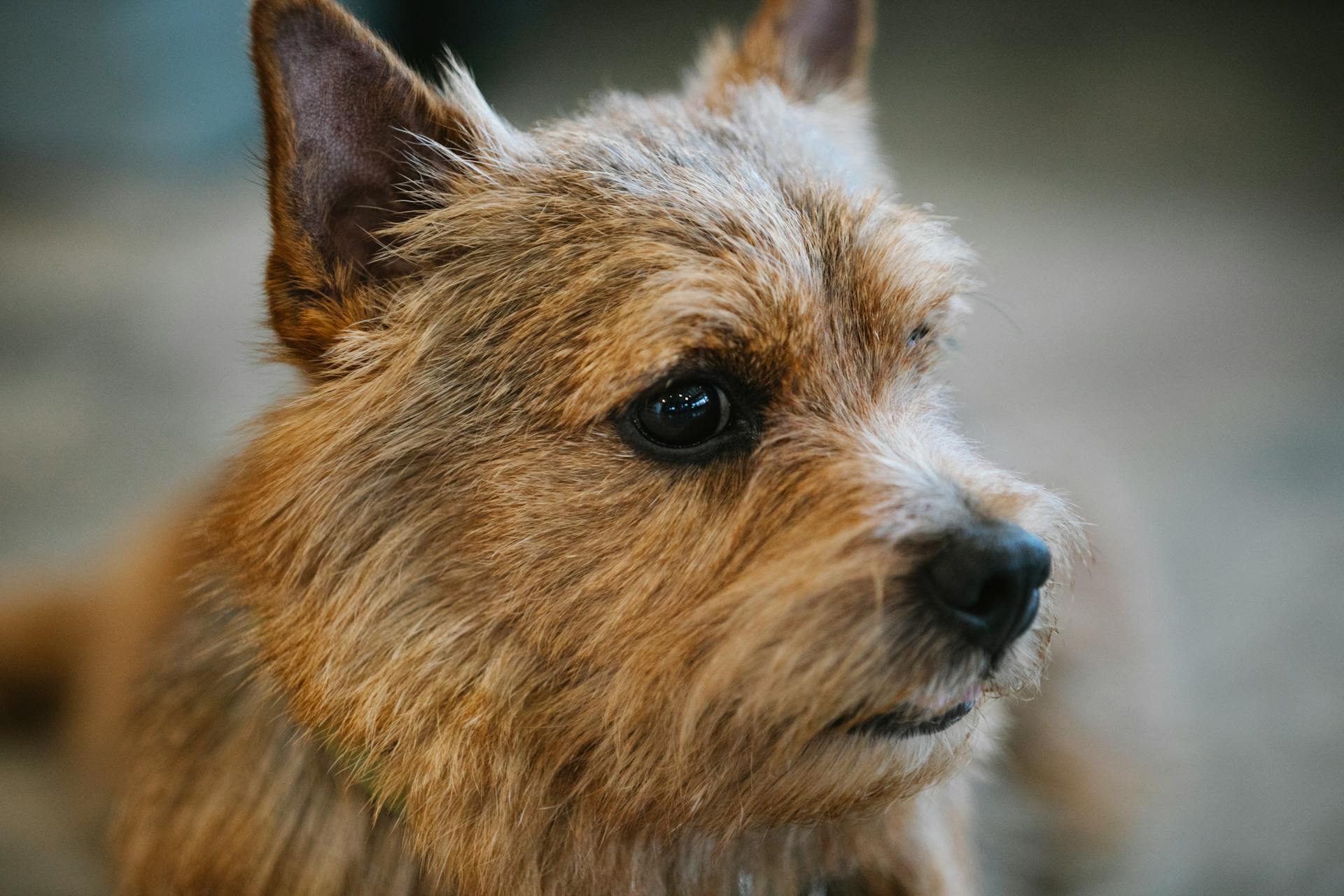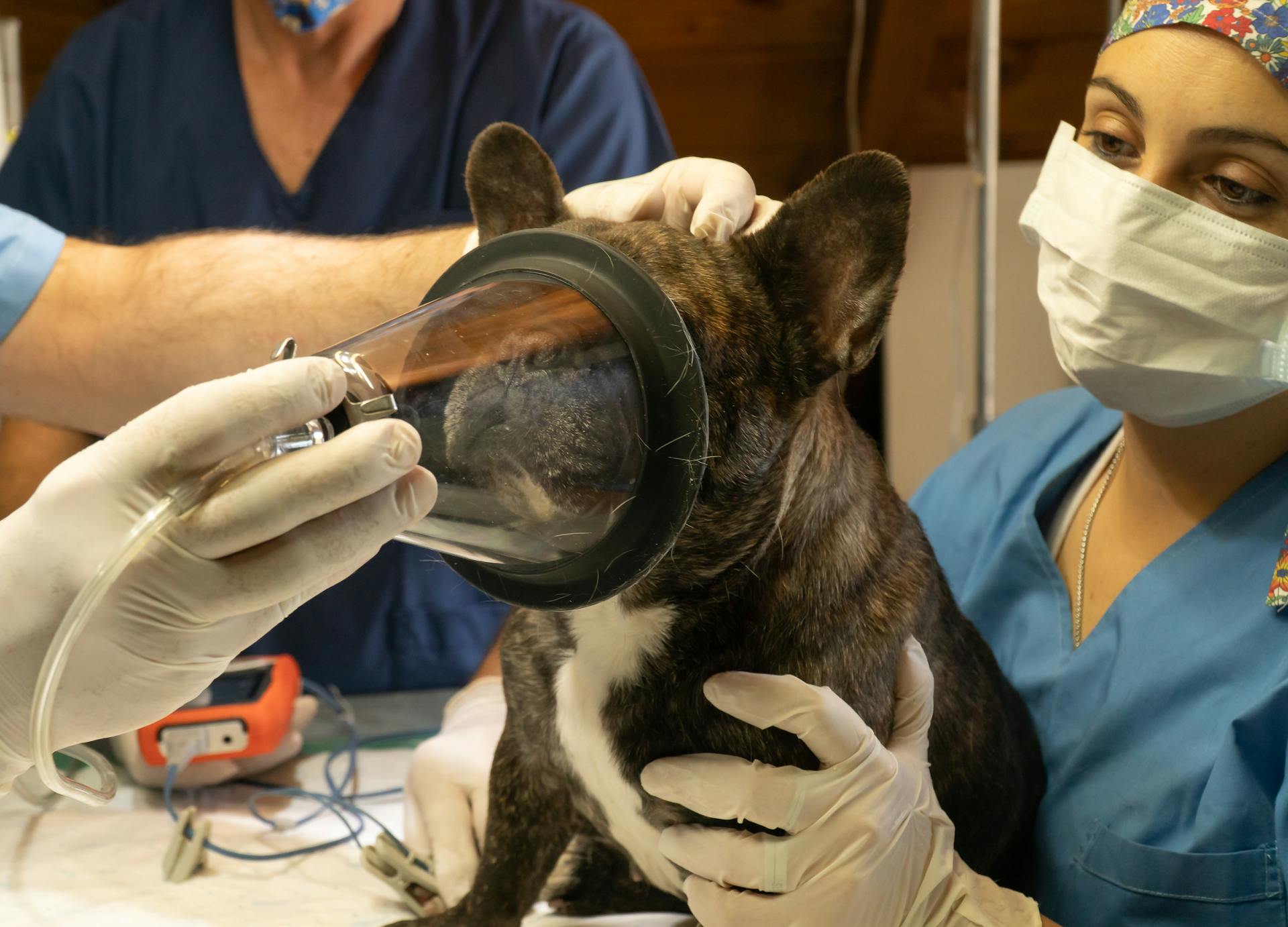
Dog lump removal surgery can be a stressful and overwhelming experience for pet owners, especially when it comes to understanding the costs involved.
The cost of dog lump removal surgery varies widely depending on the location, size, and type of lump, as well as the complexity of the procedure. According to our article, the cost can range from $500 to $2,000 or more.
Pet owners should also be aware of the potential risks associated with dog lump removal surgery, including infection, bleeding, and scarring. These risks can be minimized with proper care and follow-up after surgery.
Expand your knowledge: How to Remove a Flea from a Dog
What Is a Lipoma?
A lipoma is a benign mass made up of fat cells.
They can develop just underneath your dog's skin and are often found in areas like the chest or abdomen.
Canine lipomas are usually soft and can be easily moved around.
Your vet may start with a fine needle aspiration to confirm that your dog's lump is a lipoma.
You might enjoy: How Much Does It Cost to Amputate a Dog's Leg?
Why Remove Non-Cancerous Lipomas?
You might be wondering why you'd want to remove a non-cancerous lipoma from your dog, especially if it's not causing any harm. The truth is, some lipomas can grow to be quite large and negatively impact your dog's daily life.
A big lipoma near your dog's mouth could restrict their ability to eat, making mealtime a struggle. A large lipoma on your dog's side could make it difficult for them to move around.
Sometimes lipomas grow in bad spots, like the armpit, restricting your dog's natural ability to move. A lipoma in the elbow area could cause your dog to rub it when they lay down, leading to discomfort and irritation.
While rare, it's possible for a lipoma to turn into a liposarcoma, a cancerous growth, which is a serious concern.
Understanding the Risks and Costs
Educating yourself about the risks involved in dog surgery is crucial for pet parents. In this modern age, veterinary medicine is very advanced, but there are still risks to consider.
The cost of dog lipoma removal can vary depending on the size and location of the mass. Surgical removal can range from $200 to $800 per lipoma, on average. However, if the lipoma is unusually large or in a difficult-to-access spot, the cost can reach or exceed $1,000.
Additional costs may include anesthesia, bloodwork, medication, and follow-up care. These costs can add up, but they're necessary for your dog's recovery. Your veterinarian will likely recommend that any tissue removed at surgery is sent to a veterinary pathologist for a biopsy, which can cost extra.
Here are some estimated costs for diagnostic tests:
- An ultrasound: $350 to $1,000
- X-rays: $75 to $400
- CT scan: $1,500 to $3,000
Keep in mind that these costs are estimates and may vary depending on your location and veterinarian.
Removal Cost
If your dog has a lipoma, the cost of removal can vary depending on the size and location of the lump. A fine needle aspirate, which can confirm if the lump is fatty and thus a lipoma, can cost anywhere from $20 to $200.
For more insights, see: Dog Lump with Hair Growing Out of It
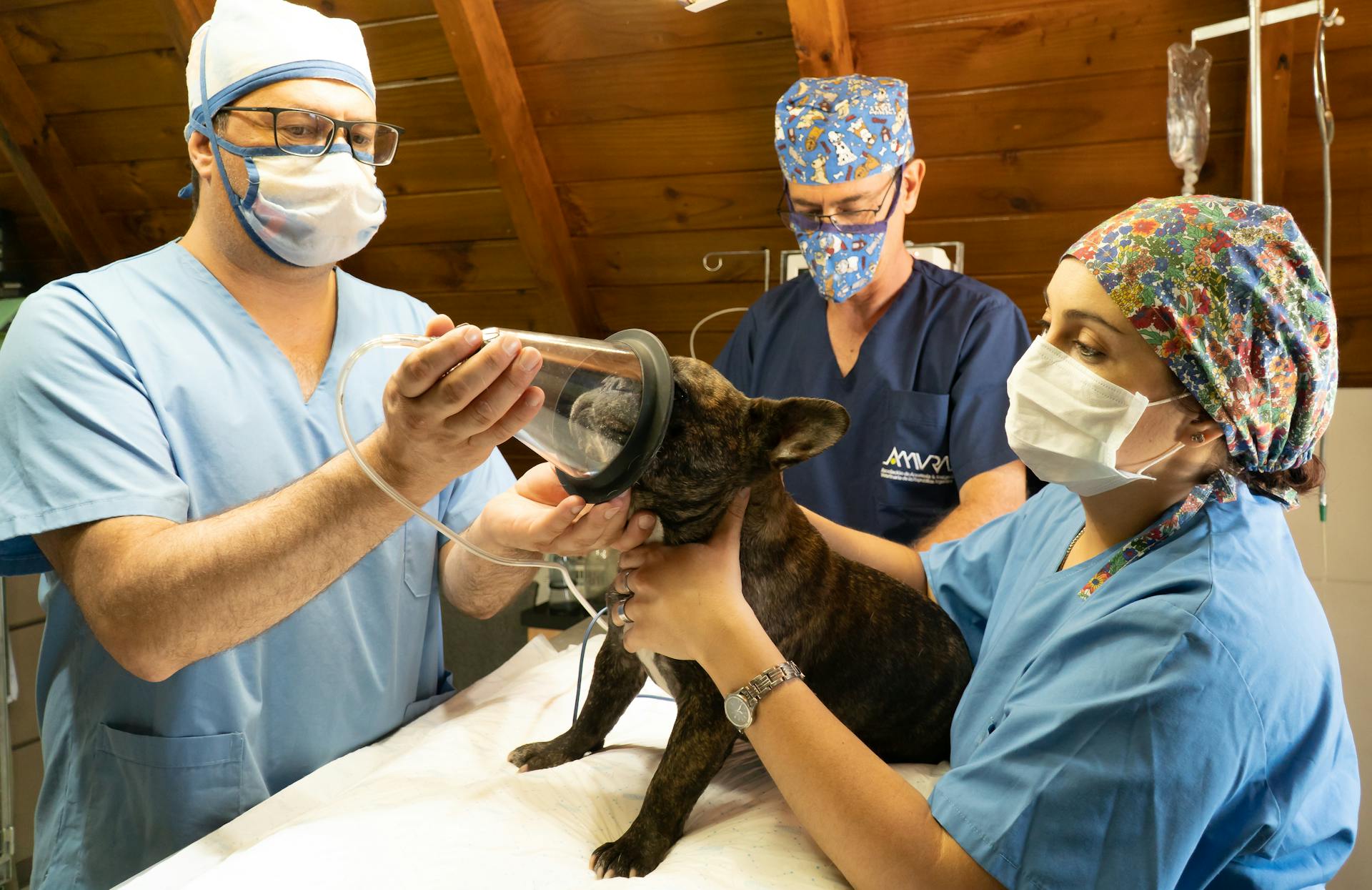
The cost of surgery to remove a lipoma can range from about $200 to $800 per lipoma, on average. However, if the lipoma is unusually large or in a tricky spot, the cost can be higher, potentially exceeding $1,000.
You may also incur additional costs for things like anesthesia, bloodwork, medication, and follow-up care after surgery. These costs can add up quickly, so it's essential to discuss them with your veterinarian upfront.
Here's a breakdown of some of the costs associated with lipoma removal:
- Fine needle aspirate: $20 to $200
- Ultrasound: $350 to $1,000
- X-rays: $75 to $400
- CT scan: $1,500 to $3,000
- Surgery: $200 to $800 per lipoma
- Anesthesia, bloodwork, medication, and follow-up care: variable costs
Keep in mind that these costs can vary depending on your dog's specific needs and the veterinarian's fees. It's always a good idea to get a detailed estimate from your veterinarian before proceeding with surgery.
Understanding the Risks
Veterinary medicine is very advanced, but risks are still present during surgery.
There are risks pet parents should consider, although they are minimized.
In this modern age, pet surgery is a relatively safe procedure, but complications can still occur.
Even with the best care, surgery can be unpredictable, and unforeseen risks may arise.
Risks are minimized during surgery, but pet parents should still be aware of the potential complications.
On a similar theme: Pet Health Dog Tear Stain Remover
Preparing for and Paying for Surgery
Before your dog undergoes surgery, it's essential to prepare them properly. The vet will likely instruct you to fast your dog starting at 10 pm the night before, but they can usually have water in the morning.
Your dog's vet may administer light sedation to prepare them for surgery, which will also involve taking blood pressure and running vitals. This is a normal part of the pre-surgery process.
To ensure your dog is healthy enough for surgery, the vet will perform pre-surgery bloodwork. This is a crucial step in determining the best course of action for your dog's surgery.
If surgery comes as a big shock to your budget, there are ways to pay for the unexpected surgery charges.
Insurance Coverage and Financing Options
If surgery comes up as a big shock to your budget, there are ways to pay for the unexpected surgery charges. Many vets offer financing options for surgery fees through CareCredit or other financing services.
You can break up the cost into a monthly payment schedule to lessen the burden on your finances. This can help make the surgery more affordable and manageable.
Pet insurance is another option to consider. Signing up for pet insurance before the ailment occurs can help cut surgery costs. It's like having a safety net in case your dog needs unexpected medical attention.
Customize your pet insurance plan with a deductible, percentage of coverage, and co-insurance payments to fit your needs and budget. This way, you can stay prepared and not worry about the financial burden of surgery.
Pet insurance typically covers a range of services, including accidents, illness diagnostics and treatment, emergency care, and surgery. It's essential to choose a plan that covers your pet's specific needs and health issues.
Here's a list of what pet insurance often covers:
- Accidents
- Illness diagnostics and treatment
- Emergency care
- Periodontal disease
- Surgery
- X-rays, CT scans, MRIs
- ACL injuries
- Fractures
- Hereditary issues
Keep in mind that if your dog has a pre-existing condition, such as a previous lipoma, it may not be covered by pet insurance. This is why it's essential to sign up for pet insurance before any health issues arise.
A different take: Dog Daycare Insurance Cost
The Surgery and Recovery Process
Post-surgery care for your dog's tumor will depend on where it was located and the extent of the surgical procedure required to remove it.
Your vet may send you home with a cone to keep the dog from biting off the sutures, or you might use an undershirt that covers the stitches and is more comfortable to wear.
If your dog shows any of the following symptoms after surgery, check in with your vet right away: refusing food, discharge or swelling at the surgical site, opening or drainage of the incision, distension of the belly, sluggishness, changes in breathing rate, pale gums, vomiting, or diarrhea.
Your vet may prescribe painkillers, supplements, or anti-anxiety medication to help your dog stay pain-free and calm during their recovery.
A different take: Vet Dogs Dog Treats
Tumor Removal Procedure
Tumor removal is a surgical procedure to remove a tumor from your dog's body. The cost of surgery depends on the tumor's size, location, and other patient-related factors.
A different take: Mammary Tumor Removal Dog Cost
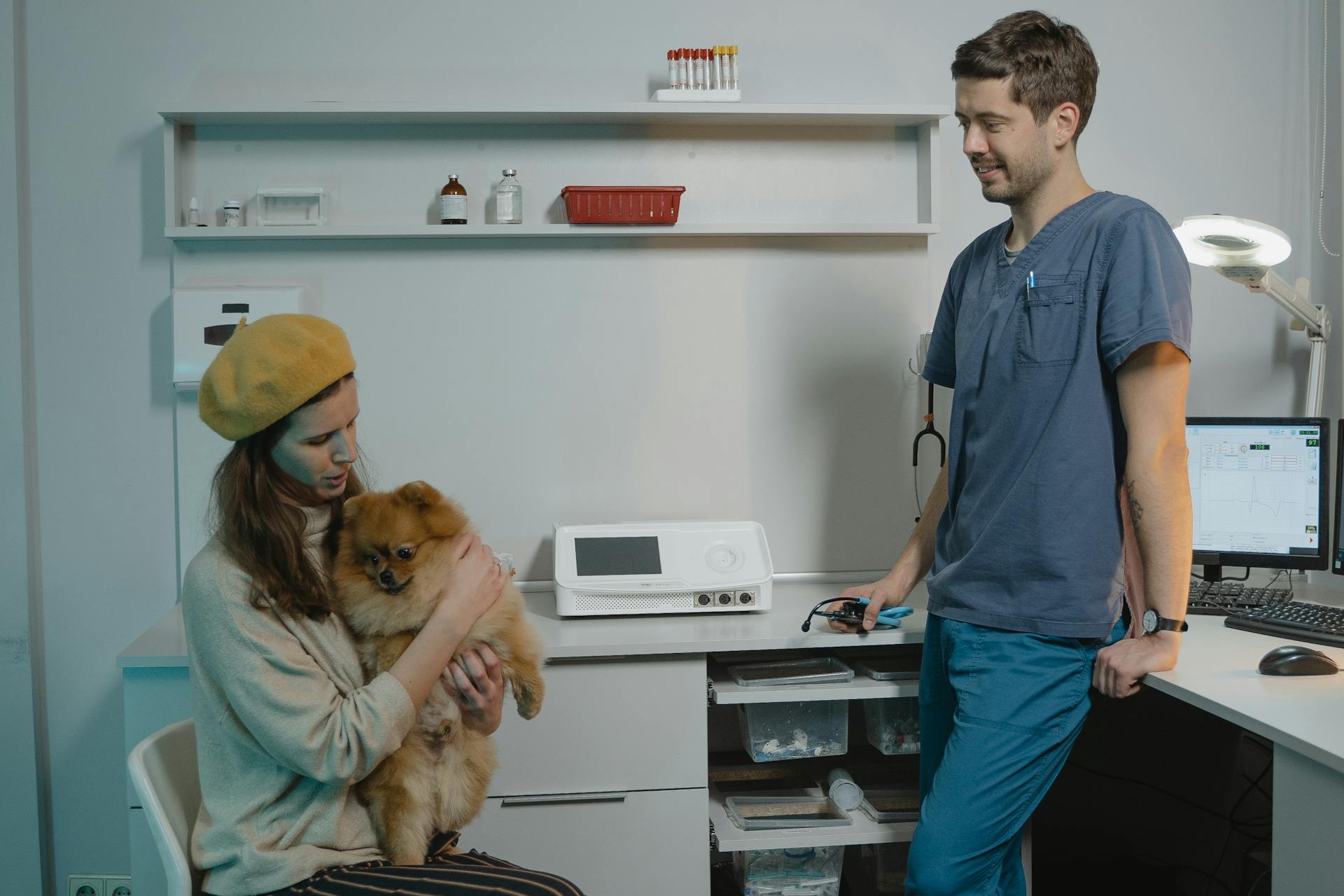
The surgeon's expertise, surgical time, anesthesia drugs and monitoring, medications, and biopsy costs are all factored into the overall cost of surgery. Some clinics may also include recheck appointments or follow-up visits in the cost.
Surgeons may use a variety of techniques to remove tumors, depending on their size and location. The surgery can be an outpatient procedure, meaning your dog will come home the same day.
In some cases, a drain may be placed under the skin to prevent fluid from building up at the tumor removal site. This drain will need to be monitored and removed several days after surgery.
Here are some estimated costs associated with tumor removal:
- Fine needle aspirate: $20 to $200
- Ultrasound: $350 to $1,000
- X-rays: $75 to $400
- CT scan: $1,500 to $3,000
- Surgical removal: $200 to $800 per tumor
- Complicated surgeries: $1,000 or more
It's essential to discuss the costs and procedure with your veterinarian to determine the best course of action for your dog's specific situation.
Recovery
Recovery is a crucial part of the surgery and recovery process for your dog. Most lipomas are fairly easy to remove because of their well-defined borders, though the incisions can be quite large depending on the tumor size.
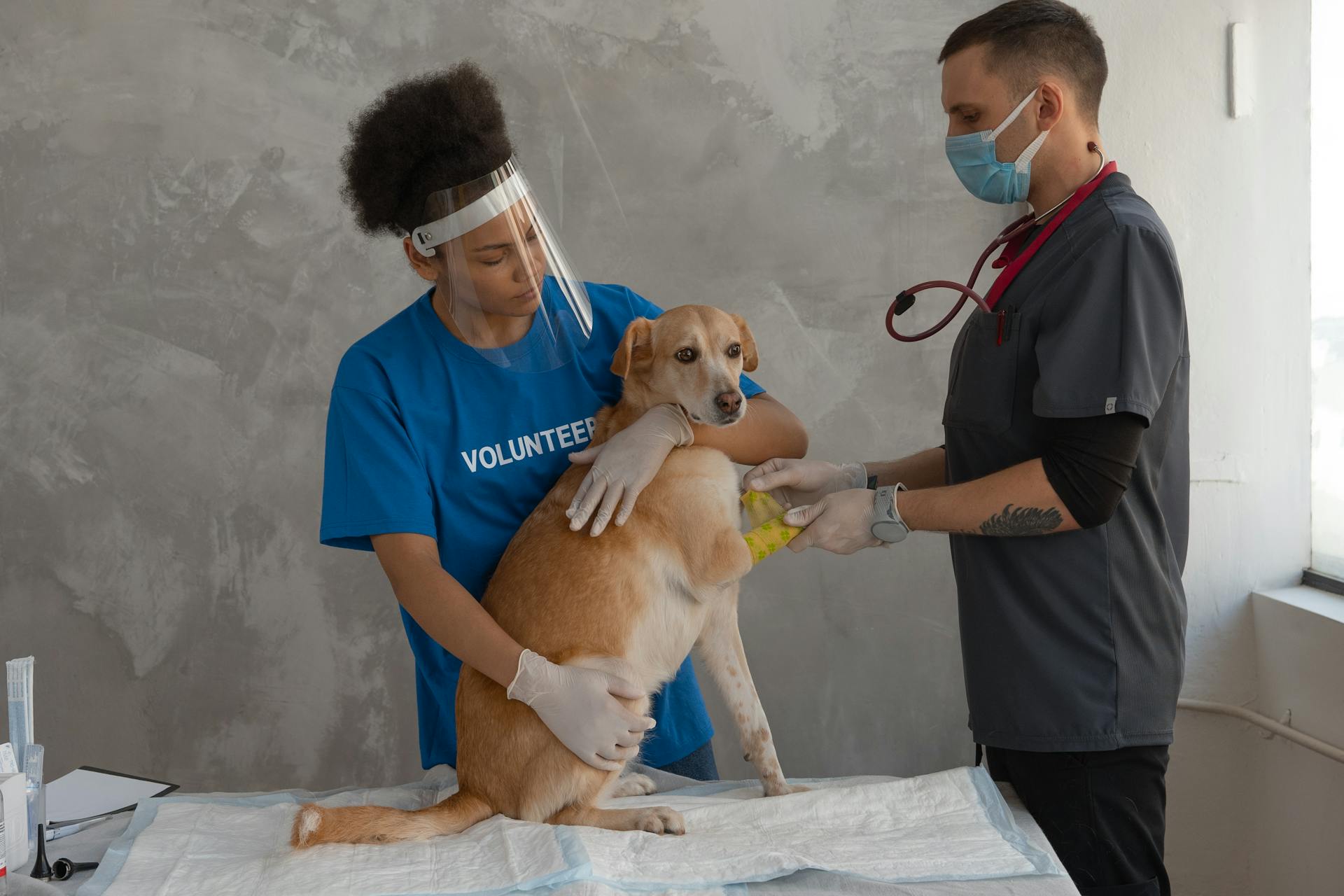
You'll need to administer anti-inflammatory medication and dog pain relievers per the directions provided by your vet. Do not use over-the-counter medications.
Your vet may place a drain under the skin to prevent fluid from building up at the tumor removal site. This drain will need to be monitored and removed several days after surgery.
You'll need to monitor the incision site for swelling, bleeding, redness, or irritation. In rare cases of more invasive lipomas, your vet may recommend overnight observation.
Here are some warning signs of a surgical complication:
- Refusing food
- Discharge or swelling at the surgical site
- Opening or drainage of the incision
- Distension (swelling) of the belly
- Sluggishness
- Changes in breathing rate
- Pale gums
- Vomiting
- Diarrhea
Your vet may send you home with a cone to keep the dog from biting off the sutures. Other options are undershirts that cover the stitches and are more comfortable to wear.
Limit activity and watch for any warning signs of poor health. In addition, keep sutures covered to keep them free of germs and keep the dog from biting them off. Arrange your schedule so the dog can receive supervision for at least 24 hours after surgery.

You will need to ensure that your dog rests for 10-14 days after surgery. If the tumor was removed from an external surface on your dog, like their skin, you will also need to monitor the surgical site for signs of infection, such as swelling, redness, pain, discharge, or early loosening of stitches.
Foreign Body
You can pay up to $7,000 for dog foreign body surgery without insurance.
If your dog swallows something that won't pass through the digestive system, you'll need to take them to the vet.
Sedation
Sedation is a crucial part of the surgery process, and it's essential to understand the costs involved. Dog sedation cost can range from $350 to keep your dog still and unconscious during significant surgeries.
During surgery, your dog will be under general anesthesia, which is a safe and effective way to keep them sedated. The type of sedation used will depend on the complexity and duration of the surgery.
The sedation cost mentioned earlier is for significant surgeries, but other procedures may require less expensive sedation options.
Frequently Asked Questions
Should I get my dog's lump removed?
If your dog has a lump that's growing, changing, or causing irritation, it's best to have it removed and biopsied to determine the cause and necessary treatment. This can help ensure your dog receives the right care and prevent potential health issues.
Featured Images: pexels.com
